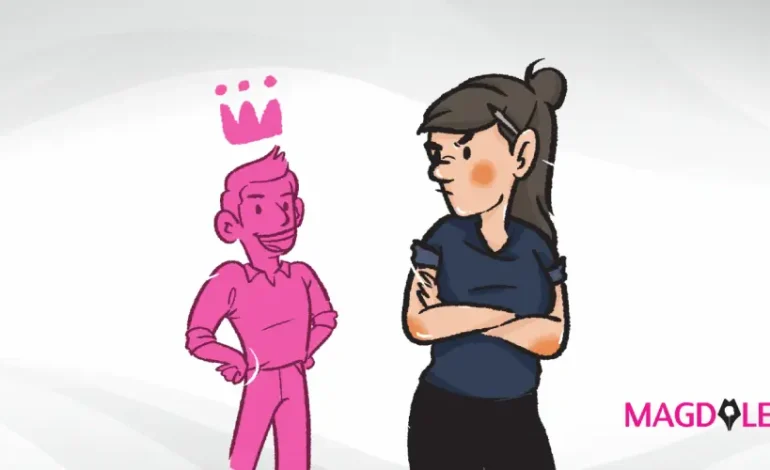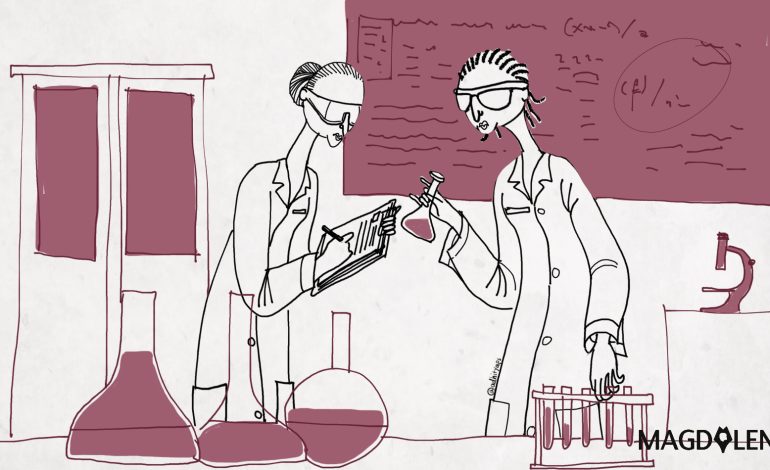The Big Elephant in STEM: Women Representation and Biased Products

“The apple doesn’t fall from the tree,” is a saying that perfectly illustrate the relations between artificial intelligence (AI) with humans as its creator.
In November 2017, Alex Shams, an anthropologist from Chicago University, expressed his frustration that Google Translate was gender biased. He had inputted a number of Turkish words to try to get them translated into English.
“The Turkish language is a gender-neutral language. There is no ‘he’ or ‘she’—everything is just ‘o’. But look what happens when Google translates to English,” Alex posted in his Twitter account.
A captured page shows Google results in which cooks, nurses and teachers were gendered in sentence examples as female. On the other hand, mechanics, doctors, soldiers and cleaners were depicted as male. Furthermore, the words “single” and ’happy” were associated with men while “married” and “unhappy” were associated with women.
While the Turkish language does not gender personal pronouns, when Google translated some words into English, they are assigned a specified a gender that perpetuates sexism. Alex’s viral tweet and the sexist Google Translate became the subject of conversations for quite a while.
“Technology, like anything else, is what you make of it – and the way we are using technology is currently reinforcing the inequalities and biases of the world around us,” he said. “And the high tech industry is an overwhelmingly young white, wealthy male industry defined by rampant sexism, racism, classism and many other forms of social inequality. These are the people we are allowing to run our lives. And these are the results.”
When we use Google Translate or the autocomplete feature for example, it automatically tags the “he” gender pronoun to occupations deemed as masculine such as doctors, technicians, scientists or CEOs.
Read Also: Female Leaders Share Experience in Advancing Women’s Participation in STEM
Four years later, Monzo Bank Ltd Vice President Vuokko Aro, came out with the same complaint on International Women’s Day 2021, sharing similar experience with Google Translate as Alex’s. Finnish – Aro’s mother tongue – does not recognize gender pronouns too, and when she wrote a number of sentences containing verbs, Google Translate translated the verbs associating them with specific genders.
For example, when Aro wrote “He/she invested. He/she worked, He/she drove a car. He/she engaged in sports” Google Translate automatically accorded them the gender pronoun “he.” When she wrote “He/she washed clothes. He/she cared for children, He/she danced” Google Translate automatically tagged the “she” gender pronoun to them.
These and other similar revelations have raised an important question: Is the technological world only quick in creating new technology but slow in overcoming the old problem of sexism?
Gender Bias Because of the Lack in Representation
“Technology by default, has never been neutral. Behind its creation and development, are the technology developers and designers who are white male and able bodied,” said Dhyta Caturani, a feminist and a digital security activist. “Consequently, the end product of this development will automatically carry all their values, paradigms and mindset.”
She took the example of the period tracker technology used to monitor the menstruation cycle, and how it has a patriarchal androcentric bias.
“The application to monitor the menstruation of women was made by many men,” Dhyta said. “In their bias, the monitoring technology is prioritized for conceiving, ovulation period. The thing is, not every woman wants to be or can be pregnant. So, this application was made with the assumption that willing or not, women will eventually become pregnant, instead of being designed to monitor women’s reproductive health,” she said.
Gender biased tech products cannot be separated from their creators who are mostly dominated by men, Dhyta said. The technology we now use is the result of the lack of women representation in the fields of Science, Technology, Engineering and Math (STEM).
STEM researcher Andi Misbahul Pratiwi said that the gender gap within STEM could be seen from the dismal number or women educated in this field.
“When I was in vocational high school, for example, there were only 10 female students out of the 40 students in total. At university, the percentage did not change much, although IT is a popular course,” said Pratiwi, who attended vocational high school in Informatics and Computer Technics.
She also noticed that the higher the education level, the less women there were and this would automatically impact on the work force. “STEM is a fancy field and participation in STEM education is already limited. Even more so at work,” Pratiwi told Magdalene.
There was actually no updated specific data on the number of girls taking tech and computer studies in Indonesia, but a UN Women 2015 report said that the number of women in STEM, from high school, university to the laboratory, have continued to slide.
In Indonesia, a documentary titled Indonesian Women and Technology (2015), showed that girls in vocational STEM-based high schools only accounted for two percent according to data from the Education and Culture Center for Data and Statistics. The Straits Times reported in 2015 that only four out of every 10 vocational high school students in Indonesia were girls.
At the global level, representation of women in the STEM field is no less worrying. A UNICEF 2020 report showed that women only filled 40 percent of the STEM workforce in 68 countries. The women in each of those countries will be really underrepresented in technical and technology jobs in the future because only 28 percent of professional women are in the world’s technology industry.
Read Also: Normalize Women in STEM to Encourage More to the Field
Furthermore, women are also underrepresented in STEM entrepreneurship. In the United States, 26 percent of tech startups had at least one female founder. In Europe only 21 percent or the founders of technology startups are women.
The lack of women representation in the STEM workforce, and even more so in its leadership is the reason behind the fact that decision making at the strategic level are still fully in the hands of men. Under the patriarchal androcentric concept, the role and perspectives of women are being muzzled. Technology as its end products could thus also never accommodate the needs of women.
Compounded by Discrimination at the Work Place
The lack of women representation in the STEM-related workplace is further compounded by the gender biases and discriminations that still haunt women there, which have led many of them to leave the field. According to the Pew Research Center 2018 report, women working in the STEM field were on average more prone to discrimination than their male colleagues.
Half of women working in the STEM field have experienced one of the eight forms of discrimination at the workplace because of their gender. This figure was higher than for the women workforce in non-STEM fields (41 percent) and much higher than among men in the STEM field (19 percent.).
The more common form of discrimination faced by women were lower salaries, being seen or treated as being incompetent, and being overly criticized as well as receiving less support from their superiors.
It is thus not surprising that a report of the New View Strategies, a business management company, showed that 38 percent of 1,000 female respondents in the technology industry said they were planning to leave their job within the first two years.
The STEM industry in Indonesia is not too different. Khalilan Lambangsari, lecturer in Agro-technology and Bio-product Technology at the Bandung Institute of Technology (ITB) recalled her own experience of being discriminated.
Lilan, as she is better known, was upset once when her company did not choose her for an overseas training, and instead picked her male colleague. “At the time, I was already a principal investigator. There was no reason whatsoever that could justify their decision to pick my male colleague instead of me,” she said.
During her pregnancy and after she gave birth, Lilan also had to face other forms of discrimination. Although she was allowed to take a company leave, it was unpaid leave. Lilan was even asked to look for and train her own replacement during her leave period. The male-dominated STEM field failed to take into consideration the needs of women who are pregnant or those who just gave birth.
“When I was working I did not get any facility that supported my new role as a mother. I did not get a paid leave and I was still required to do things by my manager. Without giving any consideration to the fact that I was pregnant, I was required to do the same amount of job like before my pregnancy, and with the same timeline as my other male colleagues,” Lilan complained. “In the end, I finally decided to leave.”
Women are Estranged from Technology from Early on
A someone dealing with issues of feminism and technology, Dhyta sees the gap between technology and women as something that existed since their childhood.
“Since they’re young, women are commonly estranged from technology,” she said.
Unlike men, culturally women’s relations with technology tends to not be as good as men’s. True, women are users of tech products, but when their products break, women are culturally more than likely to be at lost. Having good relations with technology since early on, men may be more confident when dealing with it.
Read Also: WWW: Women on the Web are Not Welcome
“For example, we can use refrigerators, washing machines, laptops, and cellphones but when they are broken, there is a tendency for women to go to the men in their lives. As if men know better how to fix things. Regardless of whether the men can fix the broken products, they tend to show greater confidence to deal with technology than women,” Dhyta said.
Pratiwi cited technophobia, a term popular among STEM workers to describe the phenomena that Dhyta alluded to. Technophobia or the dislike of technology is nurtured by the patriarchal culture. Women are not only being kept away from technology from childhood. but in adulthood they are often also made unable to master technology.
“In school textbooks that still contain gender biases, girls do not see how they can actually become technicians, astronauts. There is no such imagination among them because they are being conditioned not to enter the world of technology since early on,” Pratiwi said.
The way women are being conditioned to not have good relations with technology is a factor resulting in women’s lower self-confidence than men when it comes to working with technology, although when measured, their capabilities are actually equal.
In their research on Gender, Performance and Self-Efficacy: A Quasi-Experimental Field Study, Matthew J. Liberatore and William Wagner from the Villanova University found there was no difference in the performance of men and women in replying to questions related to computations given to them.
However, there was a significant difference statistically in the way men and women assess their own performance. Women in this case, were deemed to be less confident in their reply to all scenarios, although they did the same things as their male counterparts.
The UNICEF 2020 report showed only eight of 70 countries had at least 10 percent of their programming experts being women.
Why We Need Affirmative Policy and Curriculum Transformation
Biased tech products and the lack of women representation in STEM may look like a catch-22 situation, but it is not impossible to solve.
Pratiwi believes that the best and most appropriate way to build good relations between women and technology is by mainstreaming the language of technology This must be done from early one in a family.
When a child has better relations with technology, the second thing that can be done at family level is to take up the discussion on the variety of professions for women, Pratiwi said.
This discussion can be done while having a meal together with the family and should be discussed in a light and flexible manner. By getting girls used to this, they will have the same imagination on their future professional options as with boys, without falling into the boxes of traditional gender roles.
“Girls should be encouraged since early on so that their confidence can grow and they can become consistent in working in the field of STEM. This begins with developing their imaginations through the variety of professional options, because so far this imagination is non-existent in many girls,” Pratiwi said.
Unfortunately, just building relations with technology and planting the seeds of imagination in children through discussions on the diversity of the professions that are available is not enough. Since the beginning, women are on a different starting line as men. Even more so in fields that are being recognized as the domain of men Therefore there should be affirmative actions from policy makers so that women can obtain the same opportunities.
Pratiwi deems that affirmative policies such as providing specific scholarships for women who want to work in the field of STEM are necessary. A modified curriculum and teaching method in early education that is more just and gender equal is also another solution.
“There is need for an affirmation, there is a need for intervention, it could not just be a free fight. In what form? A scholarship for women in the STEM field, and an explicit change in curriculum. The curriculum in primary schools is gender biased. Budi’s mother cooks while Budi’s father goes to work. This affects the child’s imagination, therefore the curriculum, the teaching method, should be modified,” she explained.
Another thing that is no less important is to close the gender gap in technology by facilitating women’s access to technology. And concurrently also doing away with the socio-cultural, patriarchal values from the community level up. “Access to an equitable education is also necessary, an affirmation of a broad education system that can have a very specific impact on STEM and the representation of women in technology,” Pratiwi said.
Dhyta also agreed that the mere provision of infrastructure was not enough. Misogynistic values and patriarchal culture withing the world of technology needs to end.
“The mere provision of infrastructure is not enough because we need to form a community-based network which, of course, needs to be accompanied by the eradication of patriarchal socio-cultural values. We must do away with the patriarchal misogynistic values.”
The question then, is how long will it take to achieve this transformative change?
This journalistic project is supported by Meedan, a non-profit organization in the field of technology which has the vision to strengthen digital literacy and global journalism.






















